The ankle may be the most ignored joint next to the wrist in terms of athletic performance, flexibility, and injury prevention. Speaking in terms of a structural integrity, the base is the single most important factor.
Our ankles are stability joints that must very quickly absorb force, then help shift and stabilize weight for the next movement. This occurs faster than we can think, so we rely on learned motor patterns and reactions. This article will provide you with quick but accurate screens to assess your current mobility plus strategies to improve performance in any sport or activity.
It may seem silly to look for gains in strength in such a small joint, but having an effective and efficient base will translate to improving all other standing movement patterns. First we need to establish proper range of motion and then stabilize the joint.
Once we have control of the joint we will enhance the performance through improved ground reaction time, coordination, and power output. This follows the same patterns put forth in the squat and deadlift articles posted previously.
Using the following screens, you will examine both flexion and extension of your ankles:
Start position for screenings.
Screen #1: Active Dorsiflexion Lying Against Wall1
Lay on the ground with feet together and flat against the wall. Have your legs flat and together, with arms by your sides and palms facing up. From here, pull your toes back and as far away from the wall as possible while maintaining heel contact with the wall.
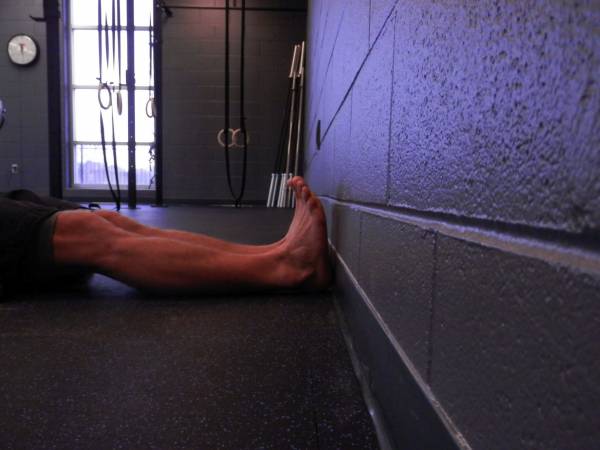
Flex the toes and feet toward yourself as much as possible.
- Inability to move the ball of the foot from the wall constitutes failure of the test
- 0.1-1 inch from the wall is acceptable
- 1+ inch from the wall is optimal (if you are able to slide the opposite big toe behind your flexed foot this would clear your 1+ inch range)
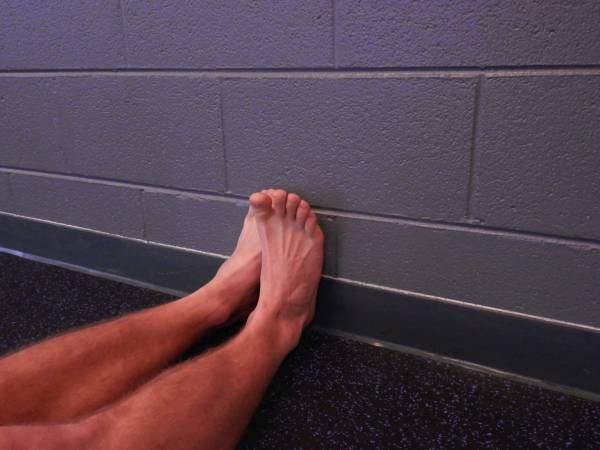
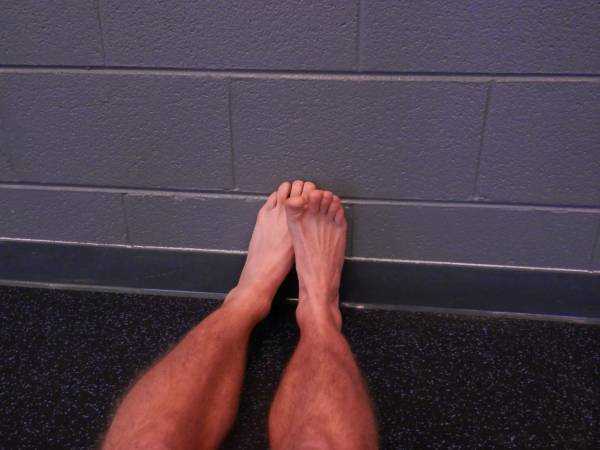
Examine flexibility one foot at a time. If you can fit big toes behind with no contact, you are greater than 1 inch.
Screen #2: Active Ankle Plantar Flexion Un-Weighted2
Begin lying on your back with your feet in a vertical position. Under control, point your toes away from you as far as possible and hold at your end range of motion.
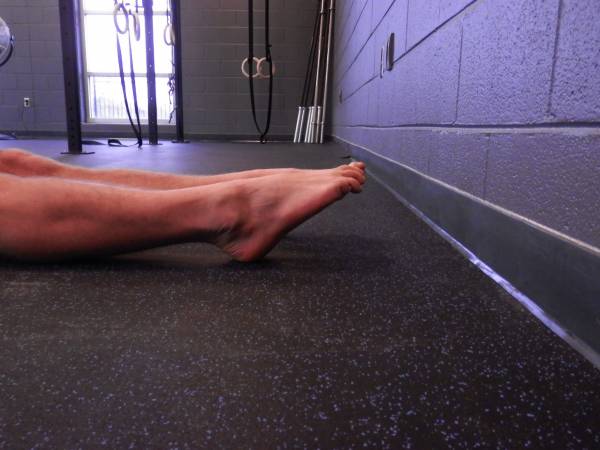
Passing extension test – greater than 20 degrees.
The goal is to achieve at least 20 degrees range of motion, and ideally 30. Visually if you reach a flat line between your foot and shin you have optimal range of motion passing the test. If you are unable to reach 20 degrees you fail the screen.
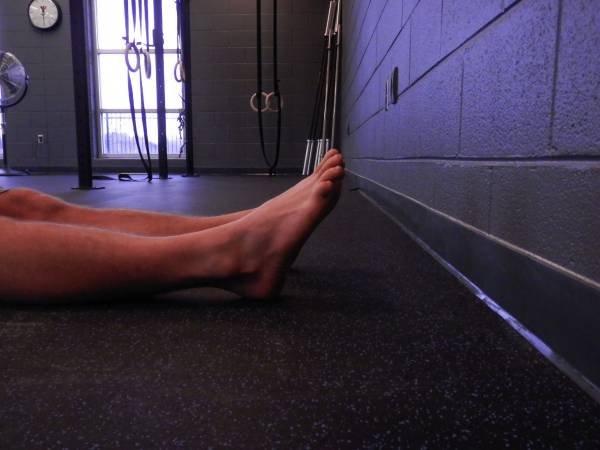
Failure of extension test.
Screen #3: Passive Dorsiflexion Weighted3
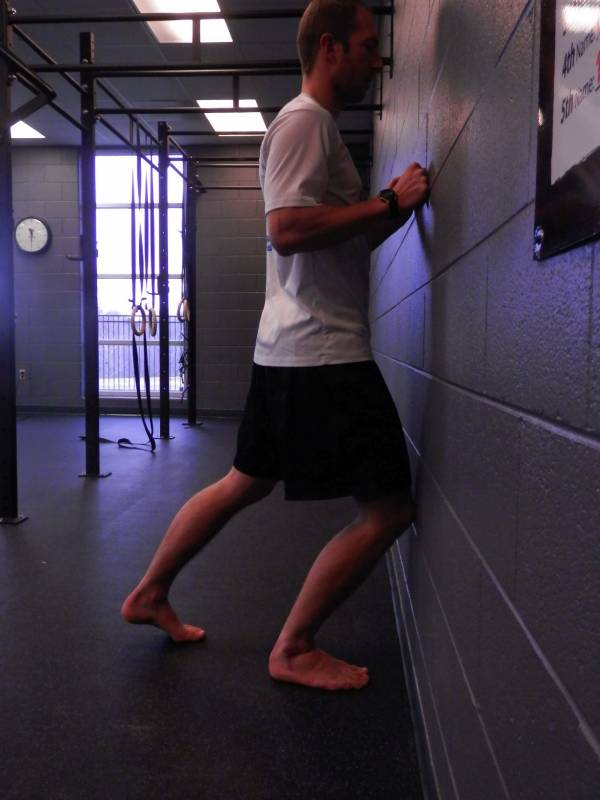 Stand with your right foot perpendicular to the wall, with your big toe 1 inch from the wall and knee in line with the second toe. Flex the right knee and attempt to touch the wall while keeping the entire foot flat on the ground paying specific attention to the heel. If successful, move 2 inches from the wall and repeat the process until maximum distance is found.
Stand with your right foot perpendicular to the wall, with your big toe 1 inch from the wall and knee in line with the second toe. Flex the right knee and attempt to touch the wall while keeping the entire foot flat on the ground paying specific attention to the heel. If successful, move 2 inches from the wall and repeat the process until maximum distance is found.
- <2 inches = failure of the test
- 2-4 inches = acceptable range
- 4+ inches = optimal range
If you have optimal range of motion in all three tests, you may then skip the mobility portion and jump ahead to the performance section. If you failed any of the tests or are in the acceptable range continue through the mobility drills first.
Corrective Pattern Sequence
Now you know where you stand, so to speak. Use the following movement sequences and exercises to start fortifying your foundation.
- Mobility – re-establishing functional range of motion
- Sitting stretches (pictures below) – perform these once per day, focusing slow lowering into a seated position until you can fully relax and there is no muscle tension while in these positions
- Perform the third screen and hold the stretch for thirty seconds and up to three minutes
- Banded stretch
- Self-Myofascial Release on calves and tibialis anterior (front shin muscle) using foam roller, lacrosse ball, Theracane, The Stick, etc.
- Range of motion movements – drawing the alphabet with your toes while leg is extended
- Static Stability – using the joint/muscle/movement pattern that stresses the area needing correction by moving other joints and requiring it to remain static
- Balance on 1 leg for 30 seconds with good posture
- Balance on 1 leg and throw a medicine ball against a wall or with a partner
- Chest Pass 3×10
- Overhead Throw 3×10
- Side Toss 3×10
- Dynamic Stability – moving the joint/muscle/movement patterns through a range of motion requiring dynamic motor control. Focus on soft landings, not maximum force/distance of jumps
- Calf raises three foot positions: neutral, internally rotated, and externally rotated
- Double leg jumps – air jump, forward jump, lateral jumps
- Single leg forward hops, side to side hops
- Full Re-patterning of Movement –moving correctly through a full range of motion
- Perform bodyweight squats with correct form using the squat article
- Strength –weighted calf raises, vertical jump for height, and broad jump for distance
- Power – box jumps, lateral jumps, agility ladders, sprint accelerations and decelerations
- Performance –sport/activity-specific training
When you arrive at the dynamic stability section of the progression make sure you slowly progress through the jumps. According to the NSCA guidelines for plyometrics a beginner should only have “80-100 foot contacts per session,” however for those who are deconditioned, overweight, or older should begin with 40-50 contacts per session.4
As a general training rule, start conservatively. You can always add more the next session, however you can never take back work already over-done.
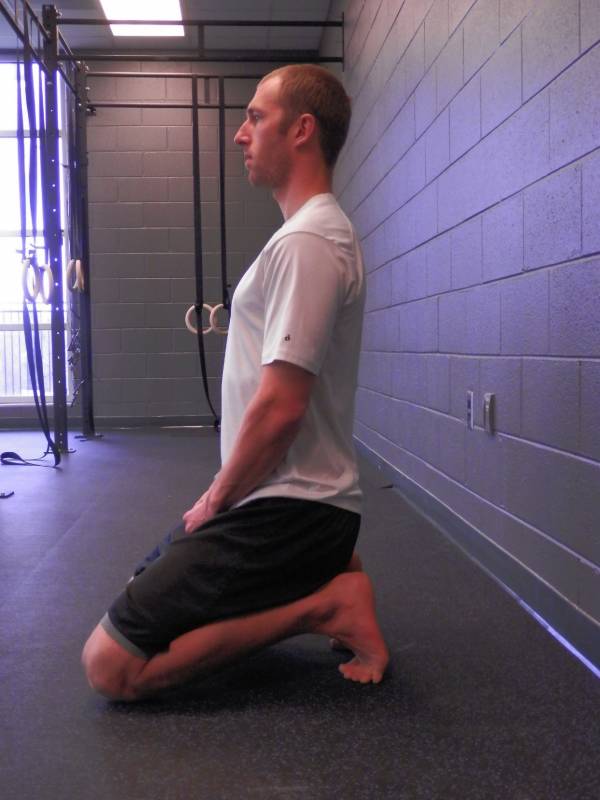
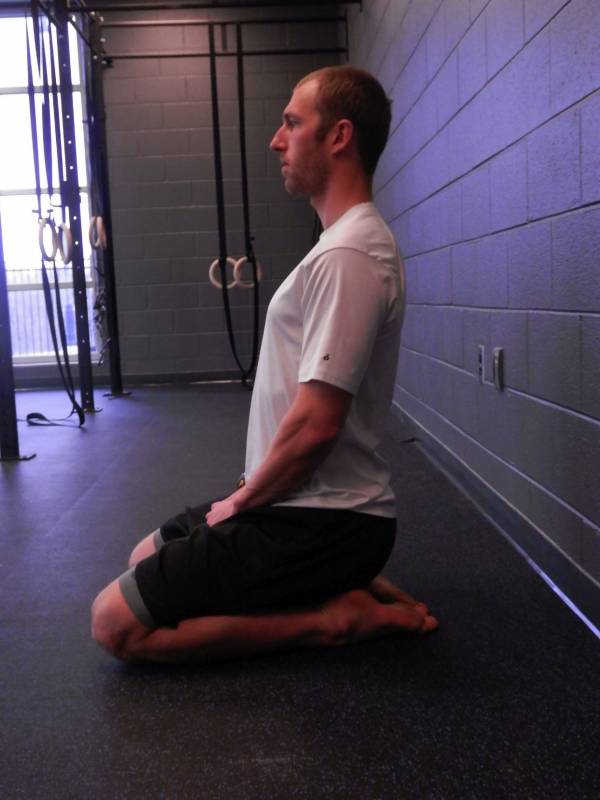
Left photo: Seated stretch, toes under. Right photo: Seated stretch, toes pointed.
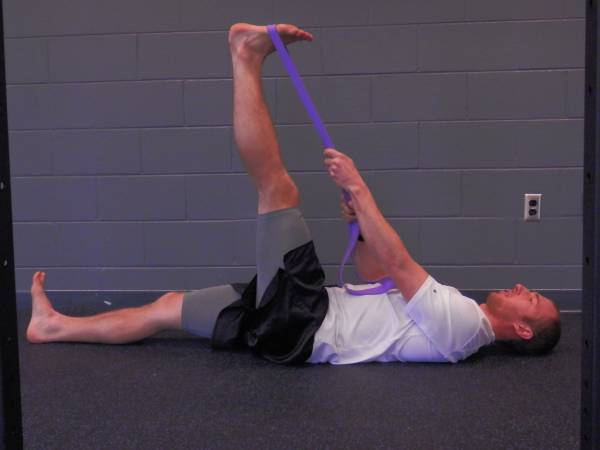
Banded stretch – keep both legs straight and flex toes toward you.
Strengthen all your weak links:
- 7 Exercises to Maximize Hand, Wrist, and Forearm Strength
- Muscular Imbalances – The Lazy Man on the Assembly Line
- Lower Extremity Pain? Check Your Lateral Subsystem
- What’s New Today on Pulse Beat Fit
References:
1. “Chapter 3 Assessing Flexibility” accessed February 12th 2013
2. “Ankle Goniometry” accessed February 12th 2013
3. “Reliability of Three Measures of Ankle Dorsiflexion Range of Motion” accessed February 14th 2013
4. “Practical Guide for Plyometric Intensity” accessed February 15th 2013






